#mapam
Text
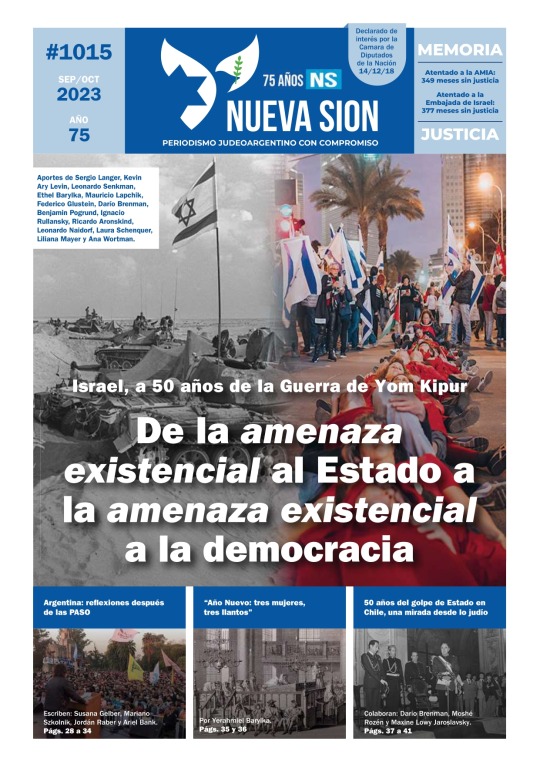
Periódico NUEVA SION, Buenos Aires,Número 1015.
Viernes, 8 de Septiembre de 2023.
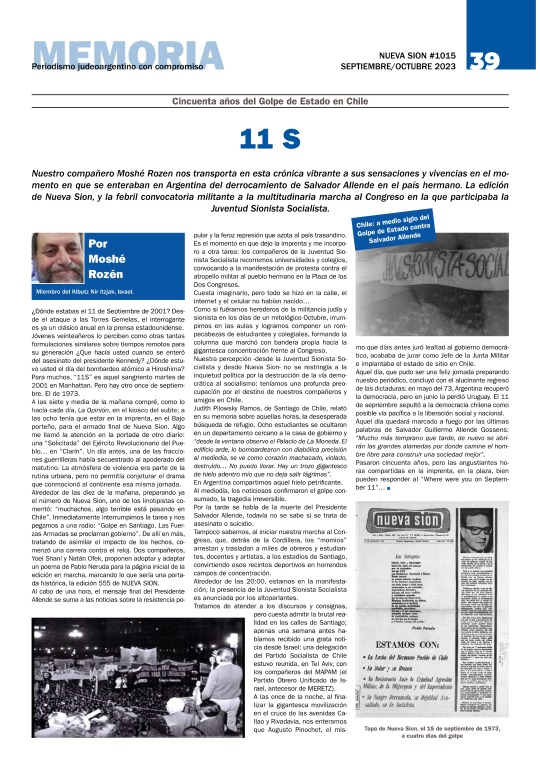
A 50 años del Golpe en Chile.
11S
0 notes
Text
AREALAB DESARROLLA UN NUEVO SISTEMA CARTOGRÁFICO
AREALAB DESARROLLA UN NUEVO SISTEMA CARTOGRÁFICO
Arealab. laboratorio de investigación en temáticas comunicativas vinculado a Areavisual acaba de presentar un novedoso sistema cartográfico que, de entre otras funciones. quiere dar valor a los lugares cotidianos de especial interés que a menudo pasan desapercibidos.
Esta fórmula llamada “mapamic” tendrá diferentes versiones y usos, a fin de propiciar una cartografía física y digital,…

View On WordPress
0 notes
Note
idk what that anon was yapping about. i’m a zionist (which does not mean what most people think it means—all it means is that i believe jewish people deserve to live in our homeland without persecution) who hates what the israeli govt is doing right now and i don’t understand how you get from “rape is bad no matter the victim” to “brown people caused the holocaust”. like, did we forget what is considered aryan? because palestinians *arent*.
hmm i think now is perhaps not the time to be a centrist either. israel’s govt rn does not exist in a vacuum. the onset of political zionism expressed the same goals that the current israeli govt is enacting. the idea that jewish ppl from around the world all share one homeland in palestine also means that the land is not for palestinians.
read plan dalet. read the end goal of early zionists. understand that what is being opposed isn’t the mere existence of a jewish state, it’s the existence of a jewish state to the detriment of the existing native population.
also zionism today means sth different from what zionism meant 130 years ago:

here are some early zionist goals:
extensive aid for a large development plan, which would enable the evacuation of large Arab tracts of lands for our colonization, through an agreement with the [Arab] fellahin.
(Heller, Yosef. Bama’vak Lemedinah, Hamediniyut Hatzionit Bashanim 1936–1948 [The Struggle for the State: The Zionist Policy 1936-1948], Jerusalem, 1984, p. 118)
I would very much like the Arabs to go to Iraq. And I hope they will go there sometime . . . agricultural conditions in Iraq are better than in the Land of Israel because of the quality of the soil. Secondly, they will be in an Arab state and not in a Jewish state. We cannot remove them from here. Not only because we cannot, even if an exchange has been carried out between the Greeks in Asia Minor and the Turks, between Turkey and Greece. But today they would not accept this.
What we can demand today is that all Transjordan be included within the Land of Israel . . . on condition that Transjordan would either be made available for Jewish colonization or for the resettlement of those Arabs whose lands [in Palestine] we would purchase. Against this, the most conscientious person could not argue . . . For the Arabs of the Galilee, Transjordan is a province . . . this will be for the resettlement of Palestine’s Arabs. This is the land problem . . . Now the Arabs do not want us because we want to be the rulers. I will fight for this. I will make sure that we will be the landlords of this land . . . because this country belongs to us and not to them . . . .
(Ussishkin)
If it was permissible to move an Arab from the Galilee to Judea, why is it impossible to move an Arab from Hebron to Transjordan, which is much closer? There are vast expanses of land there and we are overcrowded. . . . Even the High Commissioner agrees to a transfer to Transjordan if we equip the peasants with land and money. If the Peel Commission and the London Government accept, we’ll remove the land problem from the agenda.
(Source: Simha Flapan, long time head of the Mapam party’s Arab department, in Zionism and the Palestinians, p. 261, citing Protocols of the Executive Meeting)
these are the words of several zionists! read ben-gvir’s extreme racism, herzl’s goals, and more and if you think what is being done today is wrong, reasonably you would think that the things that were done in pursuit of a “jewish homeland” was also wrong.
‘Our thought is that the colonisation of Palestine has to go in two directions: Jewish settlement in Eretz Israel and the resettlement of the Arabs of Eretz Israel in areas outside the country.’
(Leo Motzkin)
5 notes
·
View notes
Text
A 120-seat parliament, the Knesset, met first in Tel Aviv, then moved to Jerusalem after the 1949 ceasefire. In January 1949, Israel held its first elections. The Socialist-Zionist parties Mapai and Mapam won the most seats (46 and 19 respectively). Mapai's leader David Ben-Gurion was appointed prime minister, and formed a coalition that did not include Mapam, who were Stalinist and loyal to the USSR (another Stalinist party, non-Zionist Maki won 4 seats)
1/6 of the original israeli parliament was explicitly stalinist!
10 notes
·
View notes
Text
From Isaías Gluzman
Ein Dor, [April 1963]
My dear Sir,
I must begin by saying how astounded we all were by your so swift and gracious reply, we hadn’t for a moment imagined you would find the time to reply. We thank you for this extreme kindness from the bottom of our hearts, both for sending the book by Ado Kyrou, and – in particular – for your thoughts on Viridiana.
We were a little surprised by your comment that ‘Viridiana has no political agenda.’ We were all convinced that scenes like the one with the beggars’ supper were essentially designed to convey a clearly delineated and partisan moral message. Although of course, viewers do tend to interpret an artist’s work in ways that do not necessarily correspond with the author’s own intentions.
I should say that the best critics in our country wrote the most thoughtful eulogies about Viridiana, even journalists who do not normally write about cinema felt obliged to dedicate their daily column to your film. The very best critic in the country, Leev Bar-Nof, wrote in Davar: ‘One of the most unique and authentic works of art in the history of cinema.’ Uri Keisari, in Maariv: ‘Run and see Viridiana now, because it’s one of those films that cinema only produces every ten or fifteen years.’
As for your thoughts on the possibility of improving humankind, I should say that this might be a unique opportunity for you to get to know a place like the one where I live: a kibbutz. I imagine you have already heard of kibbutzim, where we pursue a collective way of life, without the circulation of money, because society meets the needs of the individual. Unlike collectivization in communist countries, in a kibbutz you can enter or leave freely and there are no ‘bosses’ because the most important positions are rotated every year or two. It is the most democratic society in the world and even the representatives of three of the workers parties, who mostly live in kibbutzim, live under exactly the same conditions as everyone else.
Of course, the kibbutz is now on the defensive against attacks from bourgeois society that harass us and attempt to strangle us economically and socially. In spite of this (and despite the fact that communist countries still insist it is an impossible ‘utopia’), the kibbutz continues to survive and to symbolize just what ‘a new man in the spiritual sense’ might be.
But I’m sure I have bothered and wearied you enough already. If I have mentioned the kibbutz, it is not just because of your words about ‘spiritual change’, but also to invite you, should you ever visit Israel, to come and get to know our kibbutz (we are advocates of the revolutionary socialist Mapam party).
Until then, we eagerly await the arrival of The Exterminating Angel over here, we have read such fascinating reviews of it in French newspapers. We do not understand why it has not yet come to Israel (perhaps you could give the distributors a nudge?). Mr Buñuel, I thank you once again, most sincerely for your letter and the book, and I do hope you will be able to visit us one day.
We also hope that you will continue to make works as magisterial as Viridiana. After watching all the Bergman, Antonioni, Resnais, etc., with all their quest for new styles, it was marvellously refreshing to enjoy a work that says so much, so simply and in such a short space of time.
If you were interested in any critical reviews from Israel, I would be very happy to send them to you, although they would, of course, be in Hebrew.
With my very best wishes,
Isaías Gluzman
Ein Dor, Lower Galilee, Israel
Jo Evans & Breixo Viejo, Luis Buñuel: A Life in Letters
0 notes
Photo



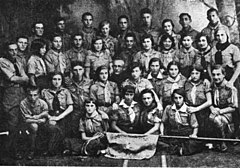


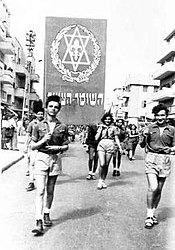
822) השומר הצעיר, „Młody Strażnik”, Ha-Szomer Ha-Cair, Hashomer Hatzair, Young Guard - międzynarodowa żydowska organizacja młodzieżowa, część składowa Światowej Organizacji Syjonistycznej. Międzynarodowa żydowska organizacja młodzieżowa, powstała w 1916 w Wiedniu z połączenia ruchu Ceirej Cijon (mającego charakter kółek samokształcenia z lekcjami hebrajskiego) oraz organizacji Ha-Szomer „Strażnik” o charakterze skautowym, opartej głównie o brytyjski model skautingu. W szesnastoosobowej grupie założycielskiej znalazł się m.in. Janusz Korczak (Henryk Goldszmit). Na ziemiach polskich organizacja rozpoczęła działalność w 1916 w Galicji. Ogniska organizacji funkcjonowały w wielu państwach europejskich. W 1924 w Gdańsku powstała Światowa Federacja Ha-Szomer Ha-Cair. Organizacja zajmowała się wychowaniem młodzieży oraz przygotowaniem jej do osadnictwa kibucowego. W sprawach palestyńskich, Haszomer Hacair popierał dwunarodowe państwo żydowsko-arabskie, mające obejmować całą Palestynę rozumianą jako ziemia na zachód od rzeki Jordan. Aktywiści Ha-Szomer Ha-Cair chcieli zerwać z typem słabego, pokornego Żyda. Ich zdaniem współbracia mieszkający w diasporze nie są tolerowani i uznawani za pełnoprawnych obywateli danych państw, lecz tylko za gości. W opinii członków Ha-Szomer Ha-Cair jedynym sensownym rozwiązaniem dla Żydów powinna być emigracja do Palestyny i przejście metamorfozy. Miała się ona dokonać podczas życia i pracy w kibucach. Uważali też, że stworzenie klasy rolniczej jest fundamentem syjonizmu. W latach dwudziestych ewoluowała w kierunku marksizmu. W Polsce przez jej szeregi przeszło kilku późniejszych działaczy komunistycznych, m.in. Wacław Komar i Leopold Trepper. Również kilku znanych działaczy międzynarodowego ruchu trockistowskiego należało w młodości do Ha-Szomer Ha-Cair, np. Abraham Leon, Tony Cliff, Ernest Mandel. W czasie II wojny światowej wielu członków Ha-Szomer Ha-Cair zaangażowało się w ruch oporu, partyzantkę żydowską i akcje zbrojne. W getcie warszawskim organizacja weszła w skład ŻOB, której komendantem był Mordechaj Anielewicz. W 1942 przedstawiciele organizacji działający w getcie warszawskim weszli w skład Żydowskiego Komitetu Narodowego. Po wojnie organizacja stała się partią polityczną. Razem z innymi syjonistami zajmowała się nielegalnymi przerzutami Żydów do Palestyny, a także działalnością społeczną (np. opieką nad sierotami żydowskimi). Ha-Szomer Ha-Cair rozwiązano w Polsce w 1949, ale istnieje on nadal w Izraelu i kilkunastu innych krajach jako świecka i lewicowa organizacja młodzieżowa. W Izraelu organizacja związana była z partią Mapam, a obecnie związana jest z ugrupowaniem Merec. Biuletynem Ha-Szomer Ha-Cair w latach 1946–1949 w Polsce było pismo „Mosty”.
0 notes
Text
Mapam Takbir 2023
20230421 #3 20.14 WIB111/365 Days 12,056
Takbir berkumandang, langit pun sudah menggelap, terenyuh hati ini. Tears down…. Missing my family badly. Missing you dad. From here, i would like to say Selamat Hati Raya Idul Fitri, Evik dan keluarga mohon maaf lahir dan batin. Selamat merayakan hari raya bersama keluarga tercinta. 😇😇😇.
#View #Night #IedFitr #IdulFitri #HariRaya #MissingMyFamily…

View On WordPress
0 notes
Text
PEMBOHONG
pas malem bilangnya mau tidor
eh pas pagi bilang lagi mau tidor karena malemnya ga tidur semalaman.
pas mapam bilang tidor itu adalah alibi menghindari percakapan2 itu.
aku tahu
0 notes
Photo
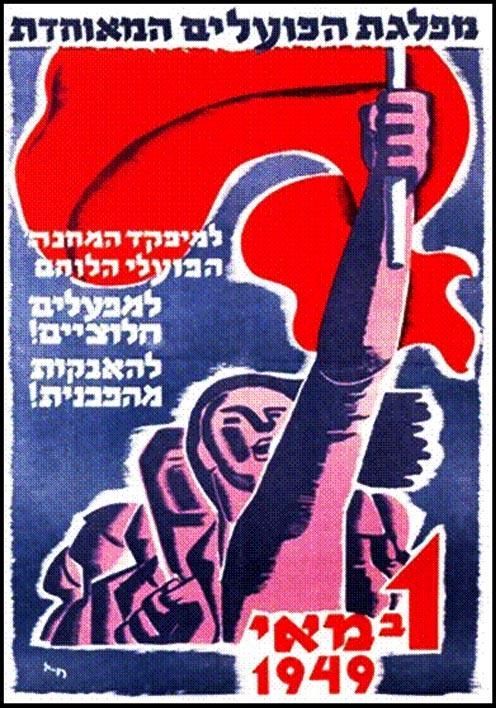
"To the rally of the fighting workers camp-To pioneering projects! To revolutionary struggle!", 1949, (Mapam, United Worker's Party of Israel)
19 notes
·
View notes
Text
Tibet

Tibet, Tibetan Bod, in full Tibet Autonomous Region, Chinese (Pinyin) Xizang Zizhiqu or (Wade-Giles romanization) Hsi-tsang Tzu-chih-ch’ü, historic region and autonomous region of China that is often called “the roof of the world.” It occupies a vast area of plateaus and mountains in Central Asia, including Mount Everest(Qomolangma [or Zhumulangma] Feng; Tibetan: Chomolungma). It is…
View On WordPress
#article#Bhutan#Brahmaputra River#britannica#Central Asia#China#Dalai Lama#encyclopeadia#encyclopedia#Ganges (Ganga) River#Ghaghara (Nepali: Kauriala) River#Himalayas#India#Indus River#Kailas (Gangdisi) Range#Kashmir#Kunlun Mountains#Lake Mapam#Langqên Kanbab#Lhasa#Mapam#Mekong River#Mount Everest#Mount Kailas#Mount Muztag#Myanmar#Nepal#Pakistan#Plateau of Tibet#public opinion
0 notes
Text
necesito bañarme, no puedo ni quiero dejar de fumar, quiero una tacha y quiero sentirme así todo el tiempo. escribir lo que siento sí me ayuda, gracias railee. no se que hacer con mi vida y quiero estar muerto hoy, digo hoy pq no sé si mañana. aunque tal vez inmediatamente mañana también. te amo juana molina, siempre me sorprendes y me haces sentir abrazado. odio los comerciales de spotify te odio dinero, ya no quiero sufrirte y ya no quiero preocupar a nadie, me gusta que me lean pero no me gusta preocuparte mamápapáamigos. te voy a llamar mapam, que bonito que eres un palíndromo. yo pensába que cringe en español era estupor pero creo que no.
1 note
·
View note
Text


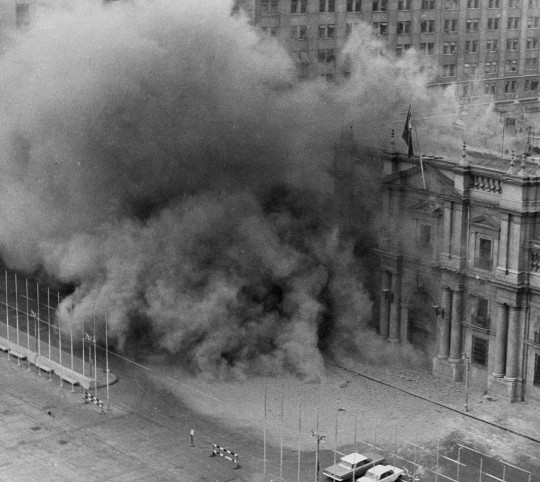
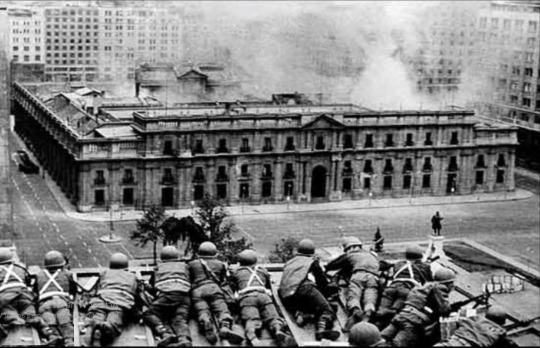
www.nuevasion.com.ar/archivos/35862
#nuevasion#mapam#chile#desde nir itzjak#santiago#buenos aires#septiembre 2023#1973#salvador allende#pablo neruda
1 note
·
View note
Text
Israel: When you hide something from the public for 73 years, the least you deserve is a visit to the International Criminal Court (ICC)!
Thanks to the עקבות Akevot Institute for their tireless work to hold Israel accountable.
https://fb.watch/3UVbO_dYQo/
#Palestine #Israel #warcrimes #Nakba
2 notes
·
View notes
Link
But the system of post-facto concealment keeps working. Haaretz tells the recent story of Israeli historian Tamar Novick, who found a 1948 document at the Yad Yaari archive in Givat Haviva. The document goes:
Safsaf [former Palestinian village near Safed] – 52 men were caught, tied them to one another, dug a pit and shot them. 10 were still twitching. Women came, begged for mercy. Found bodies of 6 elderly men. There were 61 bodies. 3 cases of rape, one east of from Safed, girl of 14, 4 men shot and killed. From one they cut off his fingers with a knife to take the ring.
It continues to describe other massacres, looting and abuse. The document itself was not signed (although it was in the file of the Arab Department official Yosef Vashitz of the Leftist MAPAM party), and it was cut off in the middle, so Novick decided to consult with Morris – who had mentioned similar events in his writings. Morris’s descriptions are from another document (a briefing by MAPAM Central Committee member Aharon Cohen), which also came from the same archive. Thus Novick went back to Givat Haviva to corroborate the two, and found that the document Morris cited was now gone.
“At first I thought that maybe Morris hadn’t been accurate in his footnote, that perhaps he had made a mistake,” Novick recalls. “It took me time to consider the possibility that the document had simply disappeared.” When she asked those in charge where the document was, she was told that it had been placed behind lock and key at Yad Yaari – by order of the Ministry of Defense.
394 notes
·
View notes
Link
The Upper Galilee village of Safsaf was captured by the Israel Defense Forces in Operation Hiram toward the end of 1948. Moshav Safsufa was established on its ruins. Allegations were made over the years that the Seventh Brigade committed war crimes in the village. Those charges are supported by the document Novick found, which was not previously known to scholars. It could also constitute additional evidence that the Israeli top brass knew about what was going on in real time.
Novick decided to consult with other historians about the document. Benny Morris, whose books are basic texts in the study of the Nakba – the “calamity,” as the Palestinians refer to the mass emigration of Arabs from the country during the 1948 war – told her that he, too, had come across similar documentation in the past. He was referring to notes made by Mapam Central Committee member Aharon Cohen on the basis of a briefing given in November 1948 by Israel Galili, the former chief of staff of the Haganah militia, which became the IDF. Cohen’s notes in this instance, which Morris published, stated: “Safsaf 52 men tied with a rope. Dropped into a pit and shot. 10 were killed. Women pleaded for mercy. [There were] 3 cases of rape. Caught and released. A girl of 14 was raped. Another 4 were killed. Rings of knives.”
Morris’ footnote (in his seminal “The Birth of the Palestinian Refugee Problem, 1947-1949”) states that this document was also found in the Yad Yaari Archive. But when Novick returned to examine the document, she was surprised to discover that it was no longer there.
“At first I thought that maybe Morris hadn’t been accurate in his footnote, that perhaps he had made a mistake,” Novick recalls. “It took me time to consider the possibility that the document had simply disappeared.” When she asked those in charge where the document was, she was told that it had been placed behind lock and key at Yad Yaari – by order of the Ministry of Defense.
Since the start of the last decade, Defense Ministry teams have been scouring Israel’s archives and removing historic documents. But it’s not just papers relating to Israel’s nuclear project or to the country’s foreign relations that are being transferred to vaults: Hundreds of documents have been concealed as part of a systematic effort to hide evidence of the Nakba.
The phenomenon was first detected by the Akevot Institute for Israeli-Palestinian Conflict Research. According to a report drawn up by the institute, the operation is being spearheaded by Malmab, the Defense Ministry’s secretive security department (the name is a Hebrew acronym for “director of security of the defense establishment”), whose activities and budget are classified. The report asserts that Malmab removed historical documentation illegally and with no authority, and at least in some cases has sealed documents that had previously been cleared for publication by the military censor. Some of the documents that were placed in vaults had already been published.
An investigative report by Haaretz found that Malmab has concealed testimony from IDF generals about the killing of civilians and the demolition of villages, as well as documentation of the expulsion of Bedouin during the first decade of statehood. Conversations conducted by Haaretz with directors of public and private archives alike revealed that staff of the security department had treated the archives as their property, in some cases threatening the directors themselves.
Yehiel Horev, who headed Malmab for two decades, until 2007, acknowledged to Haaretz that he launched the project, which is still ongoing. He maintains that it makes sense to conceal the events of 1948, because uncovering them could generate unrest among the country’s Arab population. Asked what the point is of removing documents that have already been published, he explained that the objective is to undermine the credibility of studies about the history of the refugee problem. In Horev’s view, an allegation made by a researcher that's backed up by an original document is not the same as an allegation that cannot be proved or refuted.
16 notes
·
View notes
Link
Four years ago, historian Tamar Novick was jolted by a document she found in the file of Yosef Vashitz, from the Arab Department of the left-wing Mapam Party, in the Yad Yaari archive at Givat Haviva. The document, which seemed to describe events that took place during the 1948 war, began:
"Safsaf [former Palestinian village near Safed] – 52 men were caught, tied them to one another, dug a pit and shot them. 10 were still twitching. Women came, begged for mercy. Found bodies of 6 elderly men. There were 61 bodies. 3 cases of rape, one east of from Safed, girl of 14, 4 men shot and killed. From one they cut off his fingers with a knife to take the ring."
The writer goes on to describe additional massacres, looting and abuse perpetrated by Israeli forces in Israel's War of Independence....
The Upper Galilee village of Safsaf was captured by the Israel Defense Forces in Operation Hiram toward the end of 1948. Moshav Safsufa was established on its ruins. Allegations were made over the years that the Seventh Brigade committed war crimes in the village. Those charges are supported by the document Novick found, which was not previously known to scholars. It could also constitute additional evidence that the Israeli top brass knew about what was going on in real time.
Novick decided to consult with other historians about the document. Benny Morris, whose books are basic texts in the study of the Nakba – the "calamity," as the Palestinians refer to the mass emigration of Arabs from the country during the 1948 war – told her that he, too, had come across similar documentation in the past. He was referring to notes made by Mapam Central Committee member Aharon Cohen on the basis of a briefing given in November 1948 by Israel Galili, the former chief of staff of the Haganah militia, which became the IDF. Cohen's notes in this instance, which Morris published, stated: "Safsaf 52 men tied with a rope. Dropped into a pit and shot. 10 were killed. Women pleaded for mercy. [There were] 3 cases of rape. Caught and released. A girl of 14 was raped. Another 4 were killed. Rings of knives."
Morris' footnote (in his seminal "The Birth of the Palestinian Refugee Problem, 1947-1949") states that this document was also found in the Yad Yaari Archive. But when Novick returned to examine the document, she was surprised to discover that it was no longer there....
When she asked those in charge where the document was, she was told that it had been placed behind lock and key at Yad Yaari – by order of the Ministry of Defense.
Since the start of the last decade, Defense Ministry teams have been scouring Israel's archives and removing historic documents. But it's not just papers relating to Israel's nuclear project or to the country's foreign relations that are being transferred to vaults: Hundreds of documents have been concealed as part of a systematic effort to hide evidence of the Nakba....
An investigative report by Haaretz found that Malmab has concealed testimony from IDF generals about the killing of civilians and the demolition of villages, as well as documentation of the expulsion of Bedouin during the first decade of statehood. Conversations conducted by Haaretz with directors of public and private archives alike revealed that staff of the security department had treated the archives as their property, in some cases threatening the directors themselves.
Yehiel Horev, who headed Malmab for two decades, until 2007, acknowledged to Haaretz that he launched the project, which is still ongoing. He maintains that it makes sense to conceal the events of 1948, because uncovering them could generate unrest among the country's Arab population. Asked what the point is of removing documents that have already been published, he explained that the objective is to undermine the credibility of studies about the history of the refugee problem....
One of the most fascinating documents about the origin of the Palestinian refugee problem was written by an officer in Shai, the precursor to the Shin Bet security service. It discusses why the country was emptied of so many of its Arab inhabitants...
An appendix to the document describes the specific causes of the exodus from each of scores of Arab locales: Ein Zeitun – "our destruction of the village"; Qeitiya – "harassment, threat of action"; Almaniya – "our action, many killed"; Tira – "friendly Jewish advice"; Al’Amarir – "after robbery and murder carried out by the breakaways"; Sumsum – "our ultimatum"; Bir Salim – "attack on the orphanage"; and Zarnuga – "conquest and expulsion."...
In another case, Malmab decided to conceal the following segment from an interview that historian Boaz Lev Tov conducted with Maj. Gen. (res.) Elad Peled...
Lev Tov: "We're talking about a population – women and children?"
Peled: "All, all. Yes."...
Peled: "Look, let me tell you something even less nice and cruel, about the big raid in Sasa [Palestinian village in Upper Galilee]. The goal was actually to deter them, to tell them, 'Dear friends, the Palmach [the Haganah "shock troops"] can reach every place, you are not immune.' That was the heart of the Arab settlement. But what did we do? My platoon blew up 20 homes with everything that was there."
Lev Tov: "While people were sleeping there?"
Peled: "I suppose so. What happened there, we came, we entered the village, planted a bomb next to every house, and afterward Homesh blew on a trumpet, because we didn't have radios, and that was the signal [for our forces] to leave. We're running in reverse, the sappers stay, they pull, it's all primitive. They light the fuse or pull the detonator and all those houses are gone."
#history#palestine#israel#ethnic cleansing#nakba#war crimes#bedouin#bedouins#refugees#censorship#secrecy#middle east#politics
1 note
·
View note